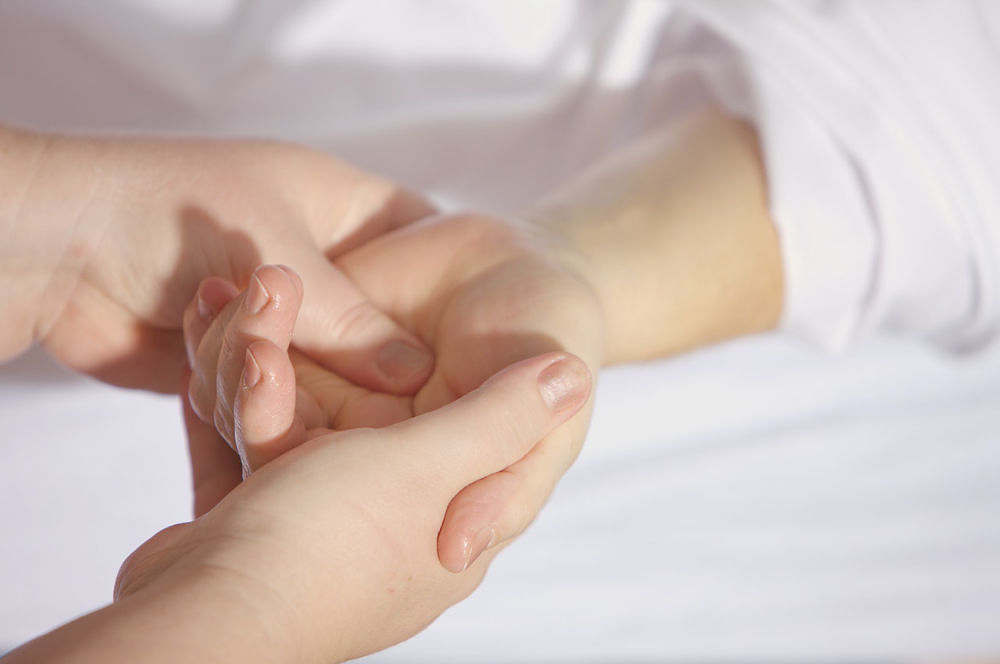Physiotherapy is the branch of health care dealing with rehabilitation from injury, illness, or disease. Physiotherapists work in many areas, including hospitals, clinics, and private practices.
Physiotherapists are healthcare professional who diagnoses and treats physical dysfunction. A physiotherapist can do many things such as, providing injury rehabilitation, applying heat or cold treatment, and providing support to the spine and joints. Physiotherapists will also be able to determine whether a patient is fit for surgery. They can also assess or suggest which type of exercise would be best suited for the patient.
Physiotherapy is used to help people who have been injured, are experiencing pain and discomfort or are recovering from a surgery. It can also be used as a preventative measure for those who are highly active and want to avoid injury. Many people suffer from chronic pain and do not get adequate relief from pain medications.
Manual Therapy is an effective treatment for this type of pain because it can help to relieve the tension in painful muscles, loosen tight muscles, increase range of motion and decrease inflammation. A physiotherapist will assess their condition, provide recommendations and treatments, and provide education about the injury or health concern.
Physiotherapy is a profession that specializes in improving the movement and function of a person's body. Physiotherapists will perform an evaluation to determine the nature of the client's injury or disability, their physical limitations, and any aids that they may need. They will work closely with their client to develop a plan that will help them reach their goals, whether it be to walk without pain or to return to work.

Movement and exercise is important to maintain a healthy lifestyle. Physiotherapists can help create a personalized exercise plan for an individual based on their abilities, needs, and goals. The physiotherapist will review your functional capacity with your mobility and ability to do different physical activities.
For example with a shoulder injury or pain, the physiotherapist will check your shoulder’s range of motion and recommend appropriate therapy. The physiotherapist may then recommend a set of simple exercises that can be done at home in order to strengthen and improve your joints' range of motion. This will also help you strengthen the weak muscles and enhance balanced coordination between them.
Excessive movement or force at an unusual angle can cause a ligament to become strained or torn. This can happen during sporting activities, accidents or general wear and tear. The amount of damage is usually graded from one to grade three. Grade one are mild injuries where a few of the structures that make up the ligament are torn. Grade two is a moderate injury, a partial tear of the structure. A grade three is severe, including a full tear or rupture which may need surgical intervention before the physiotherapist may become involved.
As joints are supported by groups of ligaments it is possible to damage more than one at once.
Physiotherapists may gently help a ligament tear, through a range of methods, typically involving exercise, corrective exercises, functional training, massage, and manipulations. A mild/moderate ligament injury can take around four to six weeks to heal. Pain may be experienced and varies greatly; sometimes it will diminish quickly or it may last longer than six weeks.
There are several types of fractures including.
If you have broken a bone, which has been corrected through a cast or surgery, physiotherapy can be a vital part of the process of helping the bone heal properly and bringing movement back to full health.
Physiotherapists treatment will vary depending upon on the specific assessment of your condition and may include.

Back pain is usually associated with middle or older age, however an increasing number of younger millennials, between the ages of 18 and 25 are now working from home resulting in an increase in back problems among younger people.
It is easy to confuse sacroiliac pain with sciatica. Both conditions can cause pain down the leg and problems sitting and walking.
The sacroiliac and hip joints support the upper back.
Sacroiliac conditions can result in increased disc pressure in the lumbar spine and eventually create sciatica. Sciatica is an inflammation of the sciatic nerve at the lower lumbar area where nerves exit down each leg.
When back problems like inflamed discs put pressure on the sciatic nerve, it can result in pain in the lower back, buttocks, hips and sometime all the way down the leg. Any sudden movements like coughing, can be painful. The pain may be sharp, dull, or achy, with a burning, or numbness sensation in the leg or foot.
Sciatica is similar to sacroiliac pain, and requires the skill of the physiotherapist to correctly diagnose and treat.

Carpel Tunnel Syndrome may be diagnosed when we feel tingling or pain in the wrist and/or fingers. This condition if left undiagnosed may lead to long-term problems.
Carpal tunnel syndrome is known as a neuropathy, meaning a nerve injury. Specifically, the Median nerve from your neck running down your arm to your hand, sending brain signals regarding the touch sensation. Injury to this nerve causes problems which can lead to changed sensations and weakness in the hand muscles.
The carpal tunnel is a channel in the wrist where the nerve enters the hand. It is made of bones and ligaments and tendons which attach to the forearm muscles. Issue occur when these tendons can become aggravated or the nerve trapped, or the carpel tunnel may become narrowed.
Carpal tunnel syndrome may result where the hands and wrists are used in repetition such as computer work, manual work or work with machinery etc.
Early intervention through qualified Physiotherapists can provide a better long-term outcome. Unfortunately, ignoring the condition may make the condition more difficult to treat.
A Physiotherapist should be able to determine if you have Carpel Tunnel Syndrome or other condition which may require treatment. Physiotherapy can involve advice, exercise, manual therapy, electrotherapy and recommending a referral if necessary.
Golfer's Elbow, similar to Tennis Elbow, causes pain in your elbow as well as possibly your wrist and hand. However, Golfer’s Elbow generally affects the side of your elbow nearest your body, whereas Tennis Elbow generally affects the outer side of the elbow. This is because, Golf and Tennis use different muscles in the arm, wrist and hand. Not only golfers or tennis players can get Golfers or tennis elbow either, anyone involved in vigorous or repetitive use of the arms and hands can be affected. Also, Golfers and Tennis players may be affected by either condition.
With either condition, as well as pain, you may have; stiffness in your elbow, difficulty making a fist, weakness in your hand or wrists, and numbness and tingling.
The pain can be sudden or gradual and may worsen with specific movements, such as swinging a tennis racket.
Physiotherapists will recommend a treatment plan based on non surgical intervention if appropriate. For example, Initially rest may recommended followed by stretching the tendons by pushing the wrist backwards and forwards (eccentric stretching). This can stimulate healing by improving blood supply.
The Physiotherapist may help strengthen the shoulder, upper arm, and abdominal muscles. This can help to reduce the muscles involved in wrist extension during shoulder and arm movements.
Taping or Strapping the forearm: This support can help realign the muscle fibres and lessen pressure on the area. A Physiotherapist may recommend using a splint for a couple weeks to temporarily prevent movement of the elbow.

Approximately 1 in 4 adults in the UK suffer from chronic knee pain. Knee pain is usually caused by osteoarthritis, a form of arthritis. Essentially, the cartilage, cushions the joint at the knee and acts like a shock absorber which can become worn or damaged over time. Also, a condition, known as “runner’s knee,” a swelling that can make the kneecap very painful, is often not felt until a day or so after running.
Knee problems have been exacerbated more recently by a general increase in weight of the UK population, It's worth noting that a general increase in one pound of weight is equivalent to four pounds of weight on the knee and as much as twice that when running up hill, for example.
The knee cartilage during general walking or running may not initially feel painful, as it does not contain pain receptors. However, once the cartilage wears away (stage 4 disease), the pain can be severe and may need knee replacement surgery. Knee replacement surgery is a commonly performed surgical procedure for people aged 50 and older in the UK. From April 2018 to March 2019, 93,911 knee replacement procedures were performed in the UK (See UK NHS Statistics).
A physiotherapist can help avoid knee replacement surgery through a programme to gradually strengthen the leg muscles, including the hips, and performing low-impact aerobic exercise. Combined with weight loss if appropriate.
For many physical conditions, whether due to sports or work injury, illness or disease, Physiotherapists are medical professionals that work with patients to provide rehabilitation, the process of recovering from an injury or illness. They help determine the most appropriate physical therapy treatment for the patient. They assess patients' health status and physical needs, and provide treatment by teaching patients exercises, performing manual therapy, and instructing patients in the use of equipment.
Book a physiotherapy treatment at The Art of Healing today.

27 physio clinicians play a critical support role for Britain’s 221 parasport athletes at the Tokyo Paralympics. With responsibilities including amongst other things: Athlete health and well-being during the Games and athlete’s physical preparation for competition.
Tom Daley and Matty Lee' physio, Gareth Ziyambi answers questions on how physios contribute to a gold-winning performance. See full story.
A year before here Gold and two Bronze medals, Jackson suffered from severe shin splints almost requiring surgery. Her Physio helped with a highly specialized treatment programme. See full story.